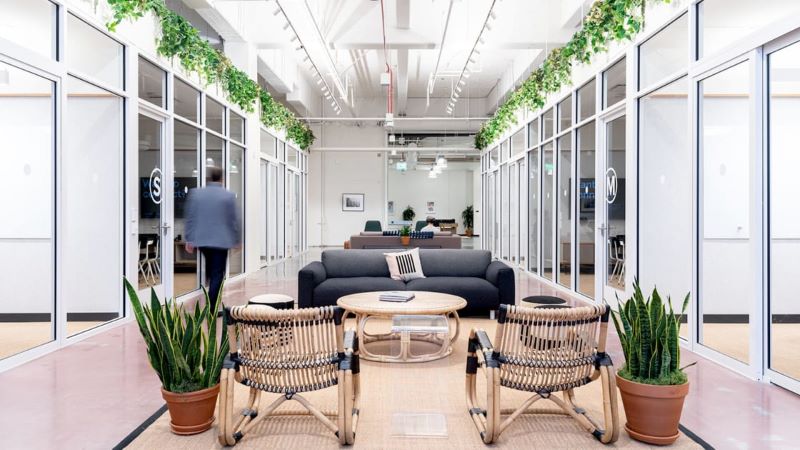A workplace is a place where our minds are supposed to function at an optimal level, Now the question arises that can Interior play a role in the optimal functioning of a Human brain? Let’s see what feng shui has to say here. Feng Shui principles state that mimicking the outdoors indoors will put you in a permanent good mood, optimize your health, and gradually improve your life. So let’s see bit by bit how each and every part of interiors can contribute to the mental well-being of the employees and boost their performance and mood and positive energy.
1. Colour Of The Workplace
Through millions of years of evolution, an innate understanding of the language of color has adapted humanity for survival—recognizing toxic foods, predators, and dangerous signals of all kinds. This instinct is subconscious and can affect the perception of our surroundings. Whether it is a meeting room, office, or lounge, the color of the environment can affect employee productivity, creativity, mood, and environmental perception.
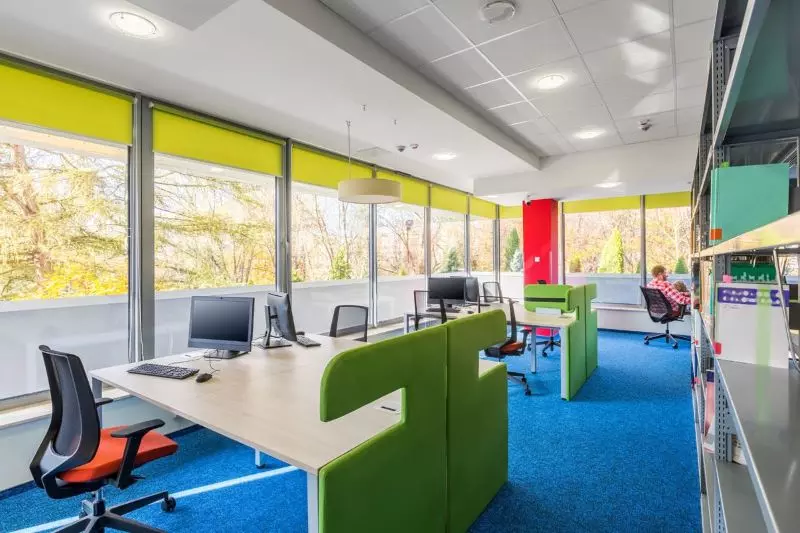
Colour psychology says every colour has a different effect on our subconscious mind and has the capacity to evoke certain emotions and feelings with 5 rules for successful commercial interiors. So the best colours to choose for a workplace will be:
- Orange: Offers a jolt of energy and innovation. It’s best used as a contrasting colour because too much can leave people feeling overwhelmed.
- Yellow: Associated with happiness, creation, and creativity. It works well in combination with lots of natural light to create a peaceful environment.
- Green: Known for its soothing qualities. Green is the perfect choice for entry because it eases the transition from the outdoors.
- Blue: Perpetuates feelings of calm and freshness. It’s a good fit for high traffic areas like Coffee machines
- Gray: Gives a sense of relaxation and serenity. Use grey majorly in office spaces.
2. Rooms At The Workplace
Studies suggest that large rooms with high ceilings can foster creativity and inspiration, whereas rooms with lower ceiling can help the individual focus on the task at hand looking up have never been more satisfying. Your company’s office is more than just the space people work in. In many ways, it’s the home away from home for your hardworking employees.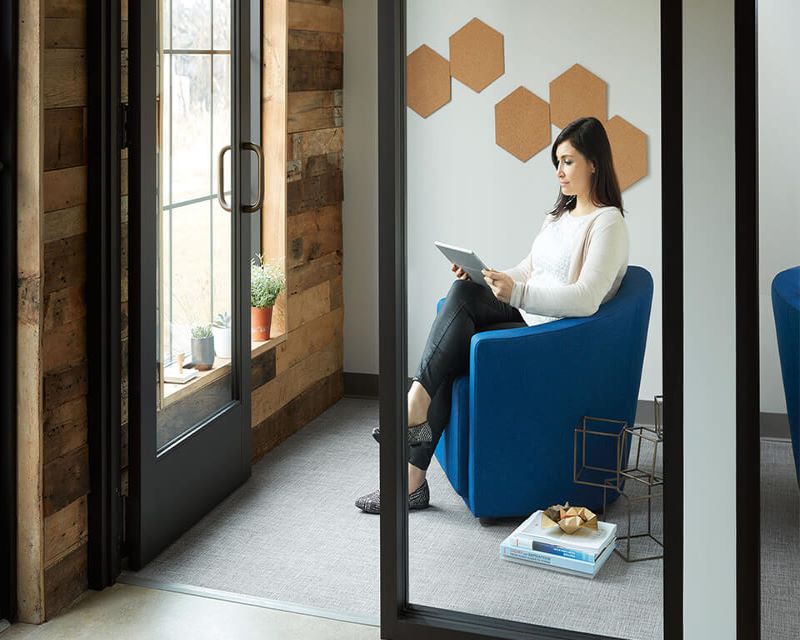
Just like an ideal home, your office should be a comfortable space that people enjoy being in. It should encourage inspiration, creativity and productivity – and reflect your company’s culture.In order for your employees to do their best work, your office should have different rooms and spaces that meet their various needs. In this business guide, you’ll learn what rooms and spaces your workplace should have and the benefits each area brings to your staff and company.
3. Window View
It’s no surprise that having access to windows and the natural light they bring can lead to a better day at work. The good news is many companies have realized the benefits of having a workspace with as many windows as possible.Those benefits include the ability to focus better and put less strain on the eyes. In one study by a Cornell professor in the Department of Design and Environmental Analysis, workers in offices that had daylight reported an 84 percent drop in symptoms of eyestrain, headaches, and blurred vision, all of which can derail productivity.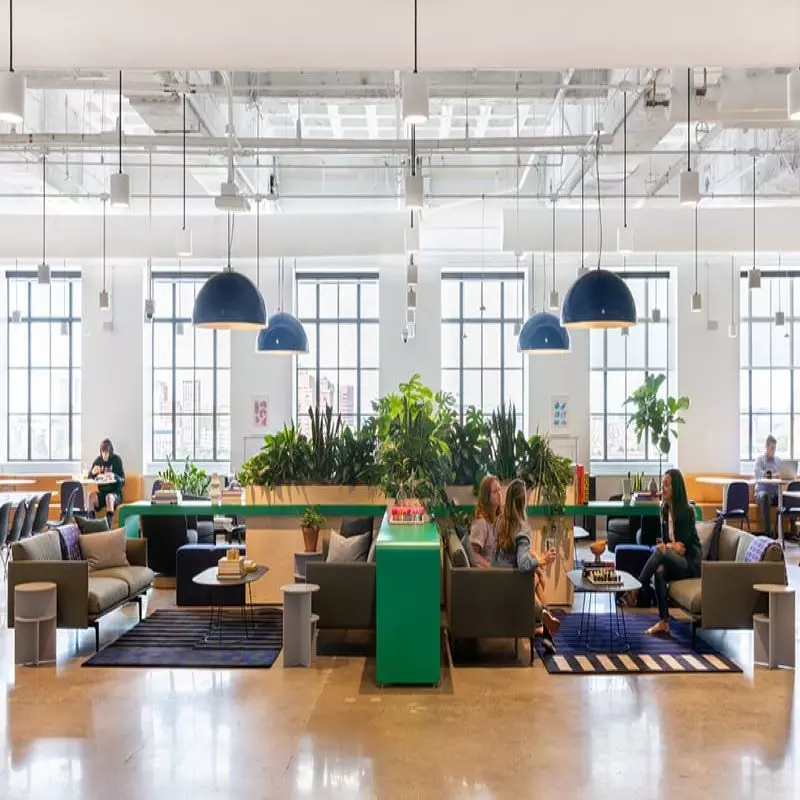
Views of natural landscape and best landscape software to beautify such as garden or fields from the workplace were traditionally seen as distracting, it was believed one may be tempted to spend their time gazing at the pleasant scenery rather than attending to the task given. However, we now know the opposite of this to be true, as these types of scenery are associated with higher productivity and a marked improvement in focus. Busy urban street scenes with moving vehicles require more cognitive processing from the brain, so they tire the person up and are very distracting.
4. Seating Arrangement
Positioning seating against the wall discourages people from socializing, whereas positioning chairs in groups facing one another encourage interaction. So use this seating style wisely for the boardroom meetings and brainstorming sessions. For most companies around the world, regardless of their specific field, one of the top priorities that exists within their offices is productivity.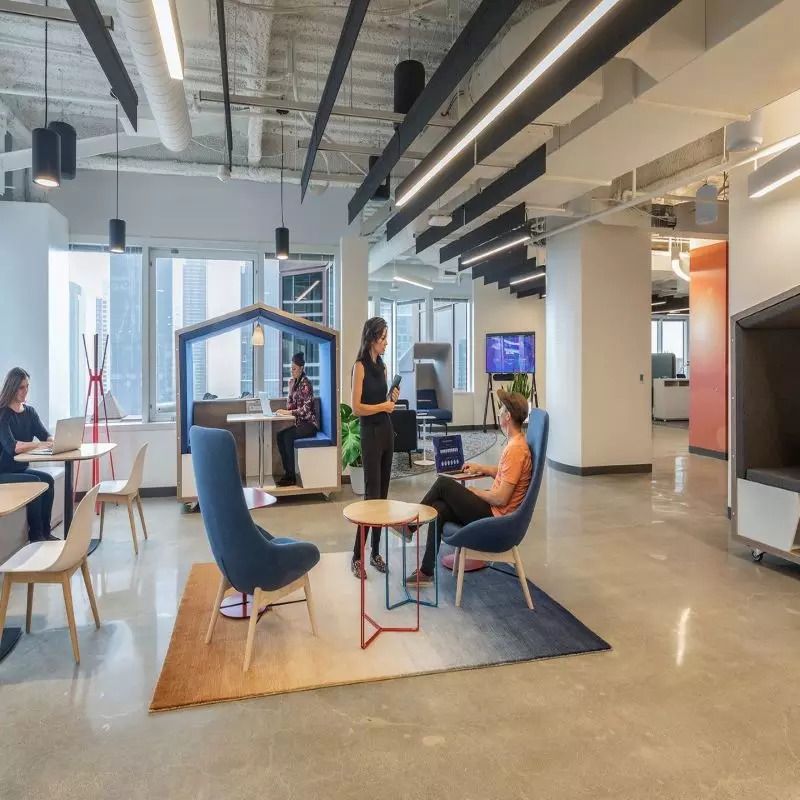
Productivity is what allows offices to optimize efficiency in order to accomplish as many objectives relating to their work as possible.Ultimately, it inspires great work and is the lifeblood of any well-functioning business. Managers have taken this into account when designing their office operations by developing a multitude of different strategies to encourage their team to achieve this goal.However, one exceptional method that can be used is the implementation of a well thought out office seating arrangement that inspires creativity and furthers productivity.
5. Lighting
Office lighting needs to fulfil a variety of requirements: in every project designers are faced with the challenge of bringing together normative specifications, economic targets, constructional conditions and design aspects into a single concept. A theoretical model of lighting functions helps to evaluate the quality of lighting not just according to purely quantitative criteria such as illuminance or energy efficiency figures. It separates lighting from the static cubic room to focus on the utilisation of the special situation – the interior, the façade and also the exterior.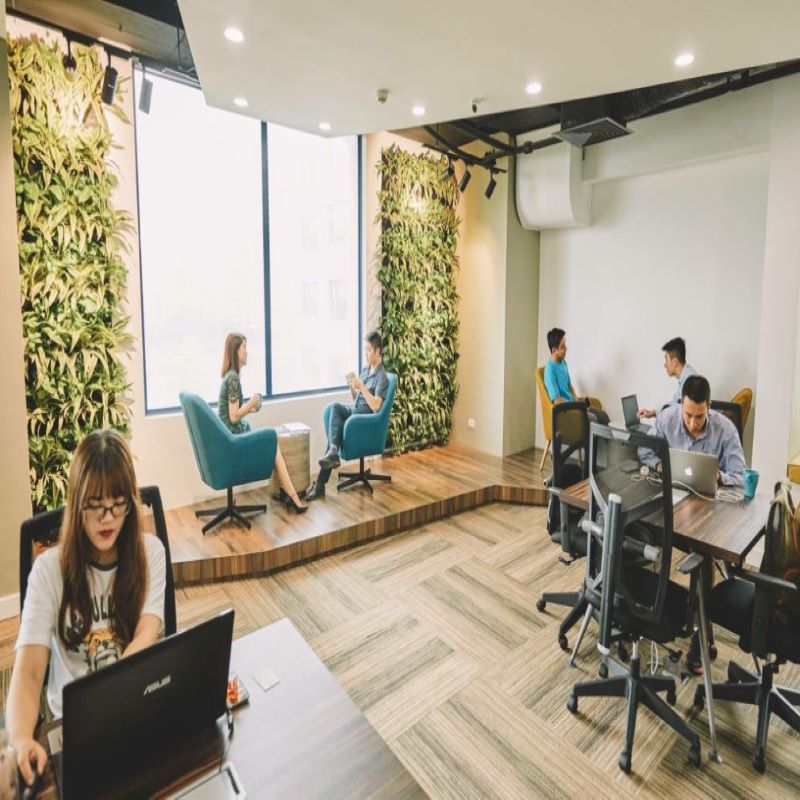
Lighting influences our moods considerably. Sunlight and brightly lit environments show an increase in productivity – this is especially true in educational settings, like training areas. A lack of natural light can lead to low moods and a depressive atmosphere in the workplace. So, try to get as much natural light in your office.The model of the lighting functions enables designers to flexibly respond to a high diversity of architectural situations and work methods within an increasingly dynamic world of work, as well as modularly grouping lighting tasks and scaling room areas according to needs. It is ideal as the basis for qualitative, perception-orientated lighting design.
6. Flooring
There are a lot of factors in the choice of the right office flooring for any environment, and that applies just as much to your workplace. Because flooring does the ‘hardest work’, its long-lasting resilience is imperative – but other factors such as feel, noise and visual impact also come into play.Choosing the best office flooring for your business will depend on the space you’re looking to cover, the amount of foot traffic each gets each day, your budget and the overall interior design style of your workplace. Using the same flooring for an entire workplace can provide visual continuity, but differing materials can also be helpful in denoting different areas according to their various uses and ambience.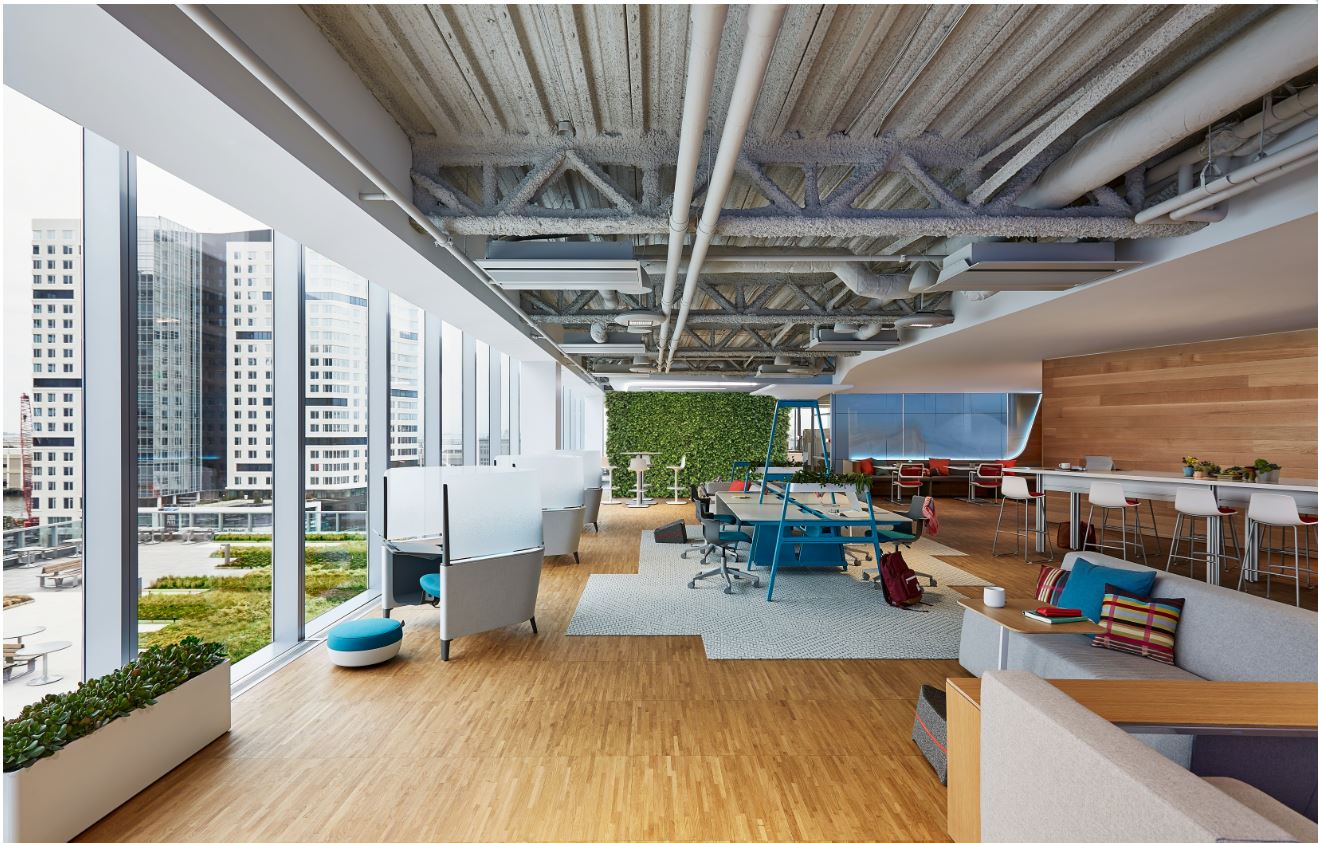
Here are the most popular flooring styles we use for our clients’ office interior designs – along with their pros and cons for different workplace areas.
- Carpet tiles
- Timber
- Bamboo
- Vinyl & laminate
- Ceramic tiles
- Concrete
- Stone tiles
Check out this article on office Interiors - Do's and Don't For Office Interiors
7. Placing The Desks
Selecting the right desk for your office is difficult enough—but have you thought about which way you to place it? Each direction, whether toward the door, the window or the wall has its own pros and cons. Though some say otherwise, there’s no universal right answer for everyone when figuring out desk placement in an office. Sometimes space constraints dictate where your office desk goes, but if you’re afforded the small luxury of desk placement options, you should definitely take advantage of them! Consider your work habits, distractions, and how you envision yourself working most effectively. Take a look at the benefits and drawbacks of each desk direction, and then select the best fit for you to optimize productivity!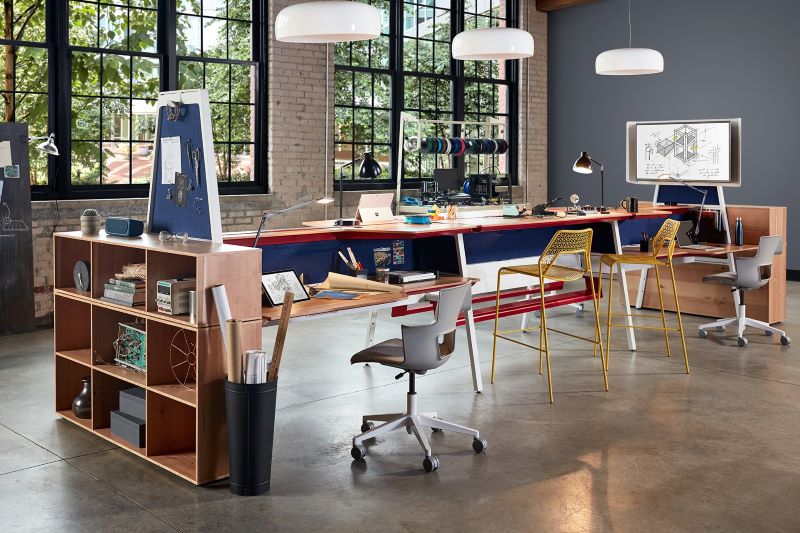
Here are some things to consider:
- Face Your Desk Away from Visual Distractions
- Enjoy the View – and Feel Less Constricted
- Avoid Your Back to the Door/Entrance
- Place Your Desk to Work Best for You
8. Furniture
Modern working methods require modern office solutions – using intelligent office furniture. Turning office landscapes into city landscapes – inspiring, versatile and multi-faceted. With a wide product range for all zones and areas of the office living space. The highest quality and functionality of office furniture with modern design and innovative technology.
Make sure you’re using a chair that is stable and sturdy, with a back that’s as high as the shoulders. It should be solid, without any gaps between the seat and the back, and the employee should be able to comfortably use it without any lingering pain. Make sure you have enough space at your desk for the chair using furniture layouts ideas. When you are squeezed into a tiny desk space, you then feel similarly crushed and held back in your work and projects.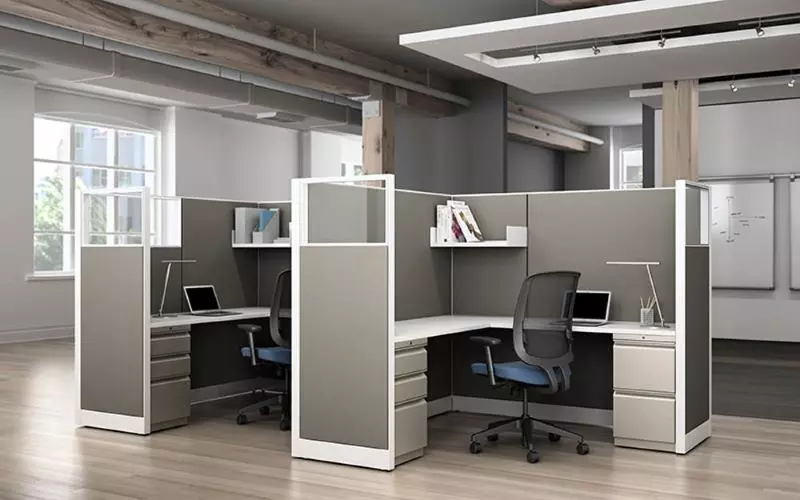
9. Plants And Artifacts
If your workspace looks dead, there’s probably not much life in your work. Plants help clear toxins from the air, making every breath you take much more clean. Fill your walls with peaceful and creative artwork with some bohemian colours of joyous, and great ideas will start coming to you. Studies show that artwork increases productivity. Go for something that you love, and put it somewhere you’ll see it most of the day.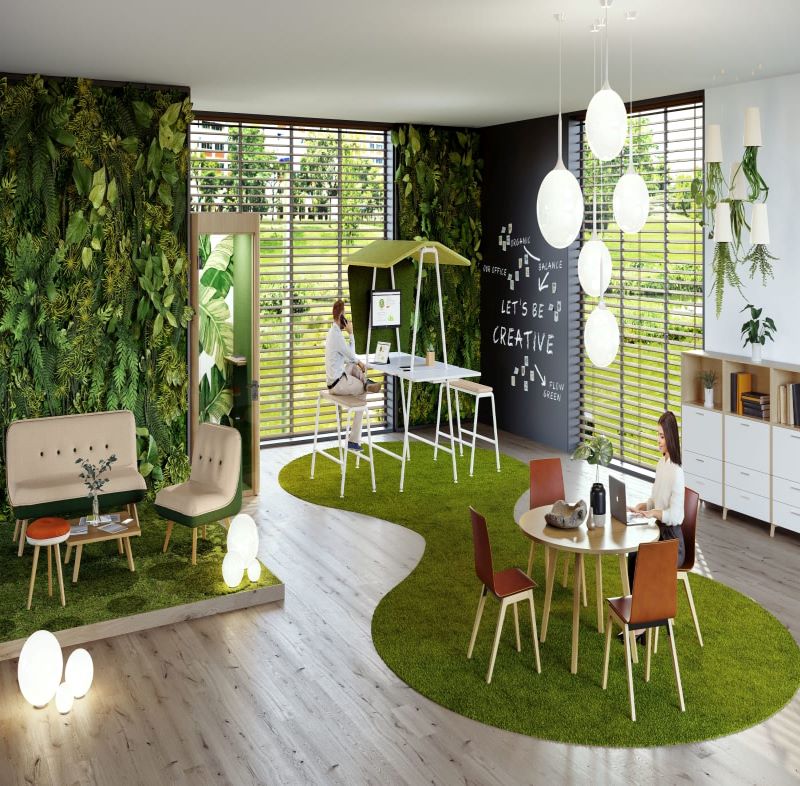
Although keeping a small jungle of office plants alive may stop the faint of heart from including them in the first place, we believe that a little greenery can go a long way. In fact, it's backed by science. From reducing stress to increasing productivity and creativity, sharing your space with live plants is always worth the maintenance that accompanies them. On and between each desk "pod" in our open office design, you'll find desktop greenery in addition to the small Audrey Ficus Trees thoughtfully scattered around. Our bright kitchen window sill also hosts more than a dozen plants of varying size and shape, and we've even hung wall planters on a handful of otherwise blank surfaces to create "living walls" that breathe life into every last corner.
10. Space For Ideas
Empty office space is only hurting your balance sheet. Every unused square foot is a lost cost. If you’re paying for office space, you should find a way to put it all to work. There’s no shortage of empty office space ideas, either.Before you rush to fill unused real estate with desks, keep in mind that not every area needs to be a traditional workspace. In fact, empty office space can be a blessing in disguise. It allows you to introduce employees to new workplace concepts. Here are five creative, practical ideas for turning empty office space into usable, purposeful work areas: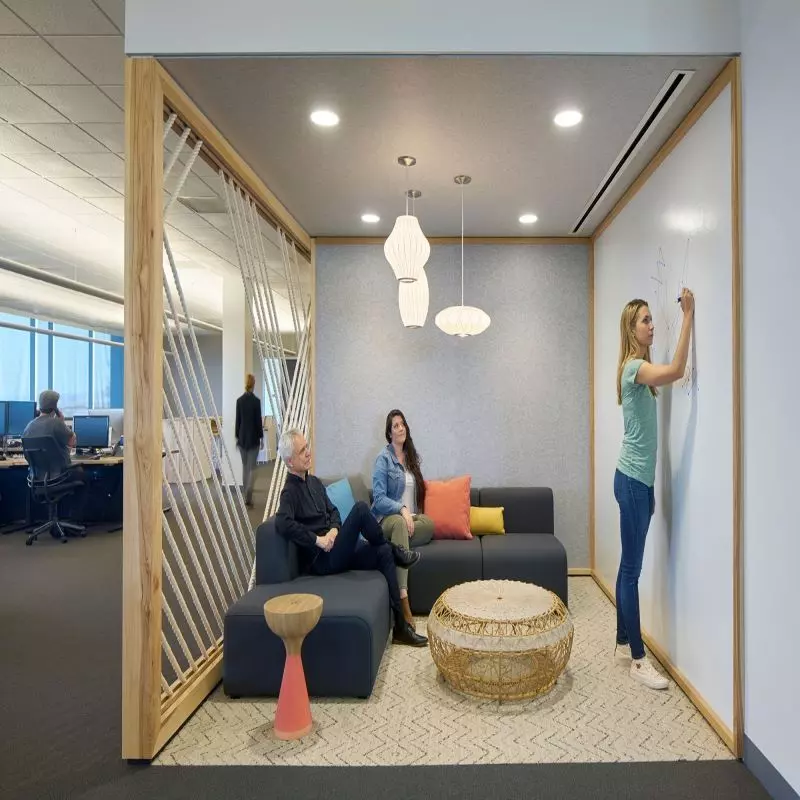
Crafting some sort of meditative space be it a desk chair, a floor cushion, a sofa, or a beanbag is always worth it. Not only will it encourage them to practice more meditation, but it can remind them to circle back to that calm place during stressful workdays. An inspiring book can also do the trick to help them feel more settled and relaxed in the space with office partition ideas, So whenever they feel overwhelmed by the work a cup of coffee and this inspirational book when mixed in a serene space can go a long way for them in finding self-motivation.
11. Free Flow Of Air
Stagnant air can sometimes make us feel stuck and unmotivated. A fan, a small desk fountain, or even a fish tank can help remove the stagnation and keep the vibrant flow going.Natural ventilation can be provided in many ways, including cross-ventilation and the chimney effect. Choosing the best strategy and how to apply it is often related to other factors, such as the orientation of the sun, technological options, location of the openings, and many other aspects. However, when it comes to interior design, the approach is to assist or enhance natural ventilation, according to the already built environment. In this article, we have selected interior design projects with different functional programs that use natural ventilation techniques to maximize comfort.
